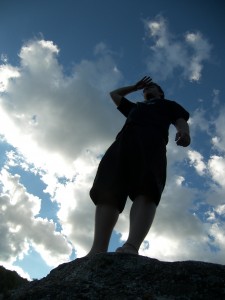
We’ve all been in job interviews and fielded the inevitable “Where do you see yourself in five years?” question. It’s a tough one to answer without appearing too ambitious or too complacent.
But I think this question is flawed for a whole other reason. In our fast paced world, how on earth can you accurately describe where you’ll be in five years?
If you’d have told you five years ago that we’d be watching live TV on our cell phones or spending hours a day on something called Facebook, I’d have slowly nodded and made a mental note to never sit beside you at a dinner party.
At the rate of change we’re seeing now, you could very well be married to a robot and living on Mars in five years.
That’s why I suggest my clients look three years ahead when creating their Vivid Vision (formerly Painted Picture). It’s far enough into the future to allow for some optimistic dreaming, but short term enough to avoid having technological advancements make your plans seem dated and useless.
Trying to visualize where your company will be further out can get overwhelming. There are too many factors to consider, too much to cover and too many contingencies to build in. And, after all that effort to soothsay what your company looks like in 10 years, some MIT grad will come along and render the whole thing moot by inventing some revolutionary device that completely changes the game.
Keeping your Vivid Vision to three years out also gives your employees a chance to wrap their heads around it, and still have time to incorporate it into their day-to-day decision making process.
And, as a bonus to you, three years means you won’t have to continually undergo the process. I suggest my clients begin working on their new Painted Picture about six months before the existing one is complete, so you’ll have plenty of time to focus on making it come true before you need to ‘paint’ another one.
Hopefully you’ve hired ambitious people, and shorter-term Vivid Visions allow them to advance and move up without disrupting your plan. If you try to forecast further out and share a vision of the company that doesn’t accommodate growth for certain employees, you might find yourself losing talent.
I usually work with young, ambitious entrepreneurial types that got where they are by always looking into the future. Getting them to scale back a bit and focus on only the next three years can be a little difficult. But I explain it to them like this; in order to create your Vivid Vision, you have to keep one foot planted in the present, and lean out to test the soil in the future with your other foot. If you lean out too far, you’ll fall down and likely stain your flashy future pants (I assume they’ll be shiny and silver.)
So don’t get ahead of yourself. Craft your Vivid Vision three years out and get to work making it come true, Those 36 months will be over before you know it!












